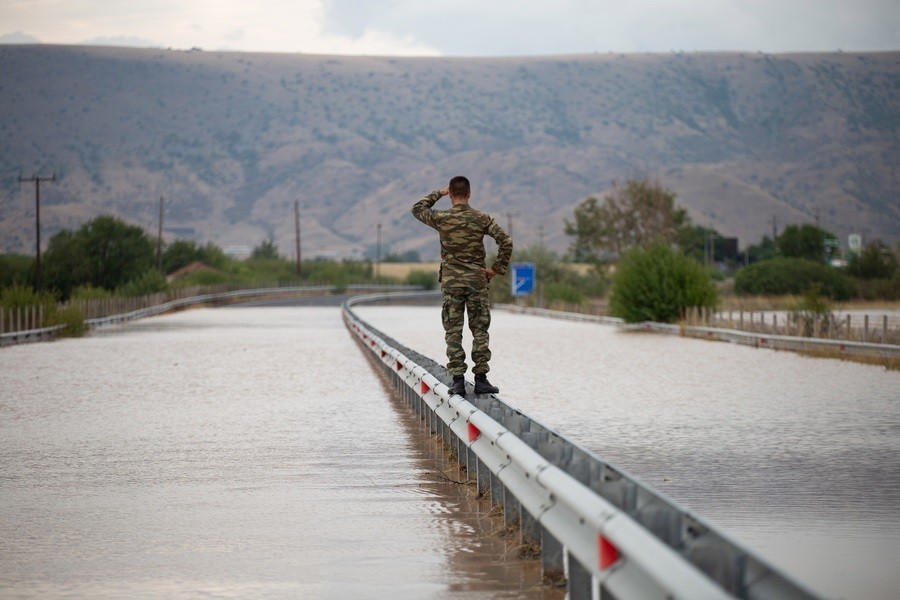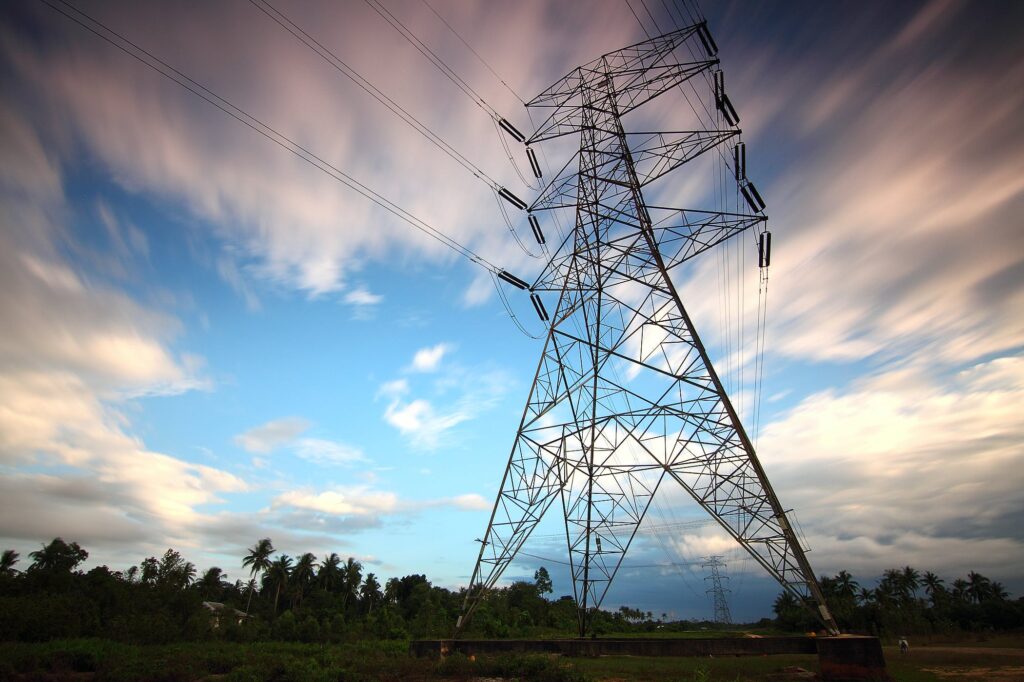
Environment Min.: Thessaly received 8 bln tons of water in the storm, more than a millennium storm

FILE PHOTOS: A soldier observes a flooded road during the storm ‘Daniel’, in Piniada village, near Trikala, Thessaly, Greece, 07 September 2023. EPA/ACHILLEAS CHIRAS
The ‘Daniel’ storm released a total of 8 billion tons of water on Thessaly in central Greece, Environment and Energy Minister Thodoros Skylakakis said in a statement on antiflood planning released on Friday, more than was projected for a once-in-a-millennium storm.
Explaining the factors Greece currently faces, Skylakakis said that:
a) The antiflooding projects in Greece are based on projections of extreme storms happening once in 50 years, but Daniel released an amount of water forecast (ca 6-8 billion tons of water) for a millennium storm, exceeding even that projection. Daniel generated 3 times the volume of water forecast for a storm occurring every 50 years, he said.
b) Antiflooding works are based on 2018 plans, but projections pointing to likely flood areas assume that the water falls in equal amounts at all areas and steadily through the day. Also, projections do not include the factor of materials carried by the flood. Any plan can only be as strong as its weakest point in terms of a single or multiple drain basins, he underlined.
c) In Greece, the dispersion of responsibilities and agencies implementing the antiflooding plans is a structural weakness of antiflood planning, as agencies vary in abilities and effectiveness.
d) The climate crisis has two outstanding features, Skylakakis added: first, in the next 30 years at least it is non-reversible and possibly worsening, with phenomena that did not exist in previous centuries; second, the climate models for these phenomena are incomplete. “Therefore our plan should be based on a hypothesis of an unfavorable, realistic possibility,” the minister underined.
Summarizing the work carried out in the government’s first term, he said, “The government invested in significan antiflooding works, after the Ianos storm [September 2020], which are at various degrees of implementation, while it has also begun the consolidation of policy in anything related to overseeing the water issue, despite the raging reaction of the main opposition, by instituting the Regulatory Authority for Waste, Energy and Waters.”
Skylakakis said the experience of a millennium-occurring flood, which was not foreseen, changes Greece’s hydrological factors and demands a comprehensive review and update of the antiflooding planning. This should include the following: improved climate models for a better forecast of ‘hyperflood’ frequency and introduce dynamic forecast models for floods; any level of preparation for floods must be guaranteed to be in place everywhere, work effectively, and follow a strict construction timetable; and the idea of resilience should top all priorities and be supported by serious funding, in this uncertain future, with a priority always to protect human lives – in other words, he said, works should be resilient for floods of a magnitude happening every 1,000 years even if the general level of flooding preparations is for less intense floodling, and it should include production infrastructure and activities of the private sector, he said.
“The implementation of this planning requires time for study. At the same time, however, it must begin and be implemented at very high speeds, because we simply do not know how much time we have,” the Environment and Energy minister warned.
Source: ANA – MPA
Ακολουθήστε τη HELLAS JOURNAL στη NEWS GOOGLEPM briefed on flood response in online meeting with Thessaly Operations’ Coordination Centre

